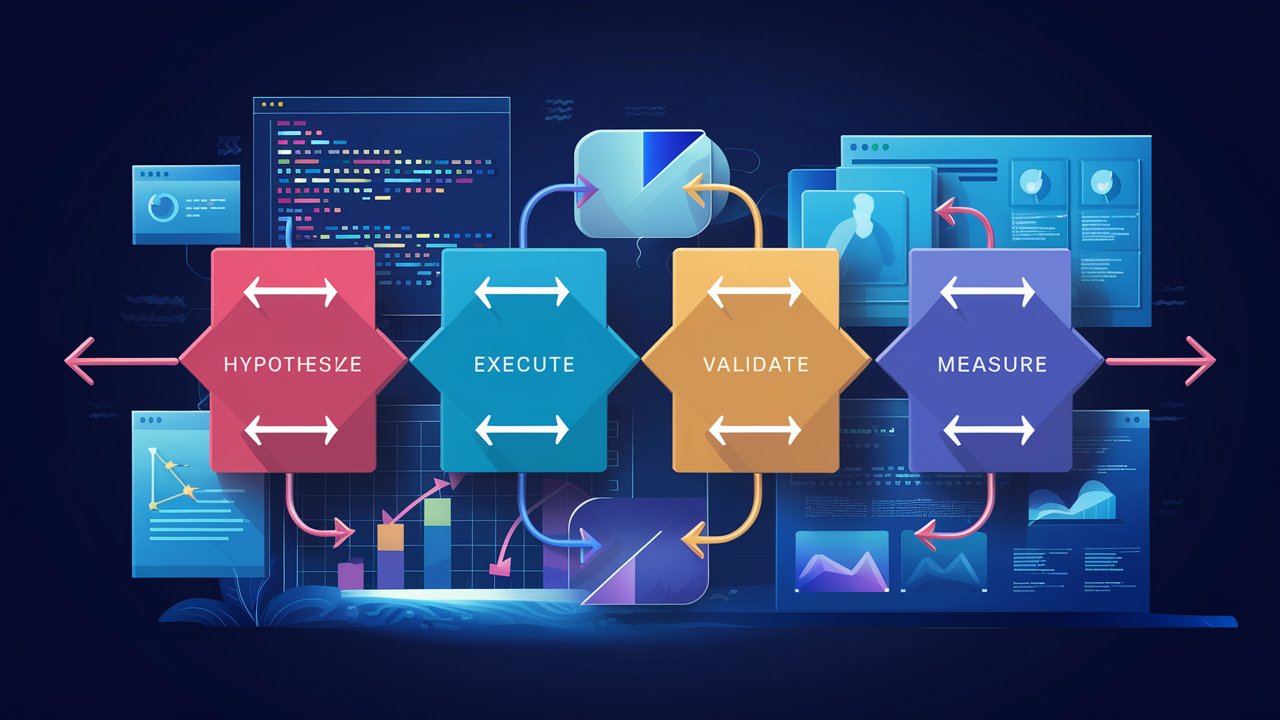It has always puzzled me – why, oh why do developers just love combining all requirements for a given individual feature in a single story? A new form? It will be a story. A new checkout logic? Yes, a story. Upsells, downsells, membership offered within a checkout? Yep, just add them all to the same story. So the stories blow up more and more, becoming unmanageable, having all their intricate requirements and test case scenarios woven into the endless paragraphs of text, get moved from sprint to sprint, and eventually get failed and failed again by QA because they can’t approve something that has 127 business rules when even one of them is not working.
The Hypothesize - Execute - Validate - Measure (HEVM) cycle emerges as a cornerstone for lean and adaptable practices. This iterative cycle not only provides a framework for building and scaling products but also ensures continuous improvement and alignment with market needs. Let's explore how to leverage the HEVM cycle across various stages of product development.
After witnessing years of both large and small companies grappling with the challenges of implementing the Agile software development methodology—acknowledging its potential for improvement or even considering it a failure—the original creators of Agile have taken the initiative to revisit and enhance the methodology. In today's exploration, we delve into the core values of Agile 2.0 to assess whether this evolved system addresses the inherent instabilities and shortcomings of the original Agile framework
Today I dare to take an in-depth look at the Agile Manifesto values, their intended meaning, some misconceptions about them, and our observations how they are sometimes implemented in real life development teams that claim they follow the Agile framework.
Agile retrospectives are the cornerstone of continuous improvement, providing teams with a dedicated space to reflect, adapt, and evolve their processes. However, orchestrating a successful retrospective goes beyond routine discussions. Let’s delve into key strategies that can transform retrospectives into powerful tools for positive change.
Refuting the idea that the business-developer relationship is obscure, we reveal a dynamic environment where each decision profoundly influences the development team. This interaction significantly guides the project towards its ultimate goal
Every Stakeholder Must Read!
It may be a surprise to you, but the decision to change product scope mid-flight can pose significant challenges that impact the project's success.
Let's explore the potential pitfalls of altering project scope and overview how to make your change requests with empathy and effectiveness. What is even more important is knowing when to make them and when to avoid.
In product development, the journey from ideation to market can be fraught with challenges. The main tragedy of many product fates is a useless, unusable, or obsolete product. Understanding the key reasons behind product failures is crucial for steering clear of pitfalls and embracing a more effective approach. Let's dissect the conventional models that often lead to suboptimal outcomes, shedding light on the missteps that hinder innovation and growth.
We have all experienced this in one way or another—when we truly believe our idea or suggestion is correct and maybe even the best, but the decision was made against it. How to deal with it? Should you fight for it, or should you submit? Today, we navigate the nuanced terrain of choices in Agile, dissecting scenarios where personal viewpoints clash with authority, team dynamics, and the challenge of defending or submitting to choices.
In recent years, the recognition of the need for proficient product coaches has surged, driven by an increasing number of companies embracing the practices of successful industry leaders. As the demand for product coaching grows, so does the challenge of distinguishing true expertise from the plethora of self-proclaimed “agile coaches” and “career coaches” with little to no product experience.
Sign Up To Get Notified About New Articles
I Promise, I won't spam you
- The newsletter will be sent no more than once a week.
- I will never share or sell your email to any third party.
- You can unsubscribe at any time.











